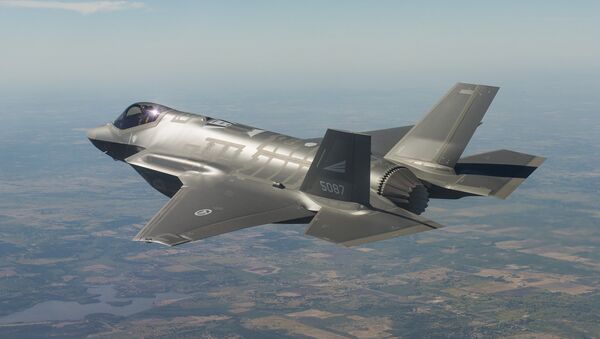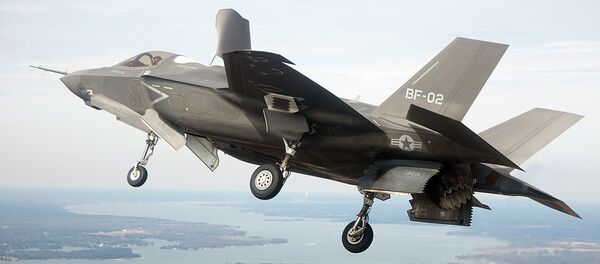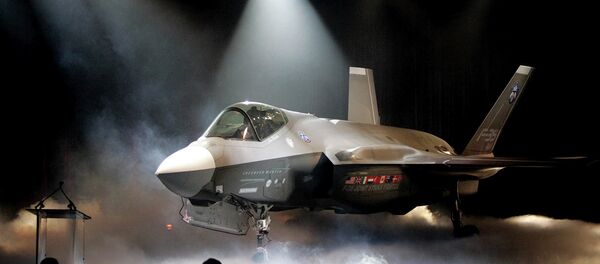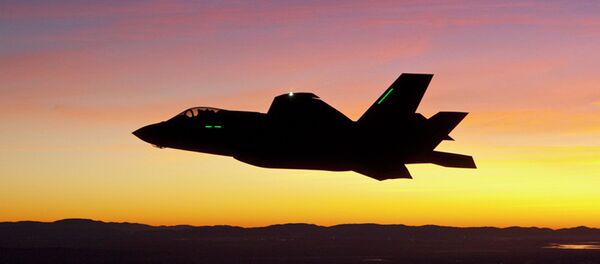Lockheed Martin’s F-35 has had a long list of setbacks, but last Thursday, the Pentagon announced that the beleaguered aircraft had conducted its first test launch of Raytheon’s AGM-154 JSOW, a 1,000-pound bomb.
"The F-35 Lightning II Pax River ITF joint team, assigned to the Air Test and Evaluation Squadron (VX) 23 aboard Naval Air Station Patuxent River in Maryland, released one JSOW during the flight," stated the US Navy press release.
"Test aircraft, CF-05, cleanly released the 1,000-pound air-to-surface guided glide bomb from an internal weapons bay, thereby maintaining the stealth characteristics of the aircraft."
The Navy plans to conduct several additional JSOW tests throughout the year.
"Working on the multi-phase testing of the F-35 block 3F capabilities, are US government, military and contractor personnel, and industry partners from Raytheon Systems Ltd," the statement reads.
The Pentagon offered no specifics on what was targeted during the test.
With a range of roughly 80 miles, Raytheon’s JSOW C-1 is described as a flexible weapon meant to "engage moving maritime targets, while retaining its robust capability against stationary land targets," according to a company statement.
The bomb also includes "a weapon datalink radio and modified seeker software to increase capability for the anti-surface warfare mission."
Surpassing $1 trillion, the F-35 program is the most expensive weapon program in history. Despite that high price tag, the aircraft has faced a number of problems. Major cyberattack vulnerabilities, technical issues with the jet’s propulsion system, and software problems related to the state-of-the-art helmets have all stalled the aircraft’s production.
Earlier tests also showed that the F-35 failed in mock dogfights against the aging F-16, the very jet the F-35 is meant to replace.
Writing for War on the Rocks last month, US Col. Mike Pietrucha expressed his doubts that the F-35 would ever stand up against Russian and Chinese defenses.
"We have been technologically outmaneuvered by both Chinese and Russian air defense designers, as we double down on a technology that gave us a decisive advantage a quarter century ago," he wrote.
"We are building the combat air force for the wrong attributes, and we are unlikely to reconsider this path as long as the Air Force remains stuck in denial."





